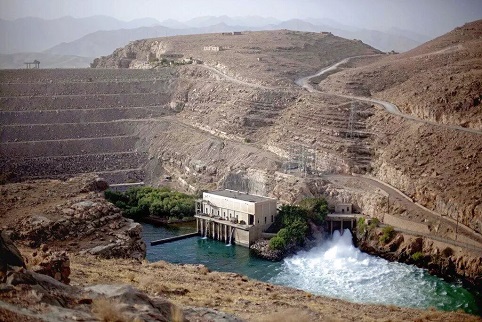
Water Conflict Between Iran and Afghan Taliban Stirs Sectarian Tensions
Publication: Terrorism Monitor Volume: 21 Issue: 16
By:

On May 27, a clash occurred between the Armed Forces of the Islamic Emirate of Afghanistan (the “Taliban”) and Iranian border guards along the two states’ shared border. Specifically, the battle occurred in the stretch of land where Afghanistan’s Nimruz Province meets Iran’s Sistan and Baluchistan Province. Following the brief confrontation, both parties promptly de-escalated the situation, but there remains a looming threat that the conflict could be reignited, with significant consequences for both countries and the region more broadly.
Background
The conflict arose in May, when Iran claimed its right to water from Helmand River, which the Taliban rejected (Ariana News, May 27). Since the 1870s, Iran and Afghanistan have been engaged in disputes over the rights to the Helmand River’s waters. These conflicts, however, resurfaced when the river changed its course in 1896. A formal agreement was reached between the two countries’ kings in 1939 to share water rights, but it was never ratified.
As per a more recent 1973 treaty, Iran is entitled to receive 820 million cubic meters of the river’s water annually. However, relations deteriorated between Afghanistan and Iran after Afghanistan underwent a Communist revolution in 1978, and Iran underwent its own revolution the following year that transformed the country into a Shia theocracy (Global Village Space, July 10(. This resulted in an ideological schism between the two countries, and thus the water issue was left untouched.
The issue of water rights was of paramount importance during Ashraf Ghani’s presidency from 2014 to 2021, as Afghanistan started constructing several dams, including the Salma Dam on the Harirud River and the Kamal Khan Dam on the Helmand River (Press TV, May 17). Discussions on water sharing arrangements between Afghan officials and Iran have continued since, even after the Taliban seized power in Afghanistan in August 2021. However, the issue has recently drawn increased attention because of the potential for skirmishes and the possibility of all-out war between the two countries.
A War of Words for Now
As the water issue between Iran and Afghanistan remains unresolved, Iran’s President, Ebrahim Raisi, has demanded the Taliban government ensure Iran’s water rights of the Helmand River based on past treaties (Tehran Times, May 19). The Iranian leadership had previously believed that a Taliban takeover would resolve bilateral issues, to include the longstanding water dispute. This is why Iran supported the Taliban in undermining the security of the former democratically elected governments of Afghanistan, including that of Ashraf Ghani (Dawn, October 24, 2018).
Nevertheless, the Taliban has not met Iran’s expectations and Iran’s patience has worn thin, due to the Taliban’s stubbornness over not releasing Iran’s share of the Helmand River’s water. Like Raisi, Iran’s Foreign Minister, Hossein Amir-Abdollahian, called on the Taliban government to open the floodgates of the Kajaki Dam. This would ensure that both the people of Afghanistan and Iranians in Sistan and Baluchistan Province have access to water (TOLOnews, May 18).
In response, the Taliban’s Acting Foreign Minister, Amir Khan Muttaqi, stressed that Afghanistan’s stance is based on the preexisting water treaty between the two countries. However, to end the war of words, Muttaqi held a telephone conversation with Amir-Abdollahian. Both parties stressed the need for cooperation in an array of fields, to include commerce, energy, power, railways, the border, Afghan refugees in Iran, as well as water rights (TOLOnews, May 18). Nonetheless, the Taliban’s efforts at diplomatic appeasement did not succeed. Rather, Iran’s frustration with the Taliban culminated with Iran’s ambassador to Afghanistan, Hassan Kazemi Qomi, giving the Taliban a one month deadline in May to resolve the issue over Iranian water rights (TOLOnews, May 20).
The Conflict Along the Afghanistan-Iran Border
Following the diplomatic row between Iran and Afghanistan, the border forces of both nations opened fire on each other along their mutual border. This claimed the lives of two Iranian border guards and one Taliban fighter, and the border was subsequently closed (Dawn, May 27). Soon after the border clash, the two sides held talks to reduce tensions.
The Taliban leadership stressed that it believes that every bilateral issue must be resolved through dialogue and without resorting to violence. Their Iranian counterparts expressed the same opinion, and the border was reopened. However, just a week after the border clash, the Taliban moved heavy military equipment to the border and conducted a military drill (Afghanistan Times, June 10).
The exercise implied that while both sides described the border conflict as “unimportant” and externalized blame to a set of shared enemies, who aim to harm relations between the two neighbors, there is nevertheless a huge trust deficit between Iran and Afghanistan. Therefore, the possibility remains of a similar conflict over the waters of Helmand River in the future (TOLOnews, May 30). The likelihood of this happening is high, as the leaders in both countries are nationalistic and religious radicals, and thus may not hesitate to enter a conflict over water rights the next time such an incident occurs.
Conclusion
Iran—led by its Shia theologians—and Afghanistan—led by the Sunni Taliban—have stark ideological and theological differences, and the water issue should not be considered a minor issue. The water dispute could take on a sectarian nature in the future, provoking a broader conflict in the region. This cannot be ruled out, as both the regimes are generally intolerant and possibly naïve in their approaches to dealing with joint bilateral issues.
A sectarian conflict arising out of the water problem would throw an already unstable region into turmoil. Moreover, a sectarian conflict would not be restricted to neighboring countries. Rather, it could spread to other regions as well, due to Iran’s role as the global leader of Shias in the world and the Taliban’s position as an inspiration to Sunni jihadists.



